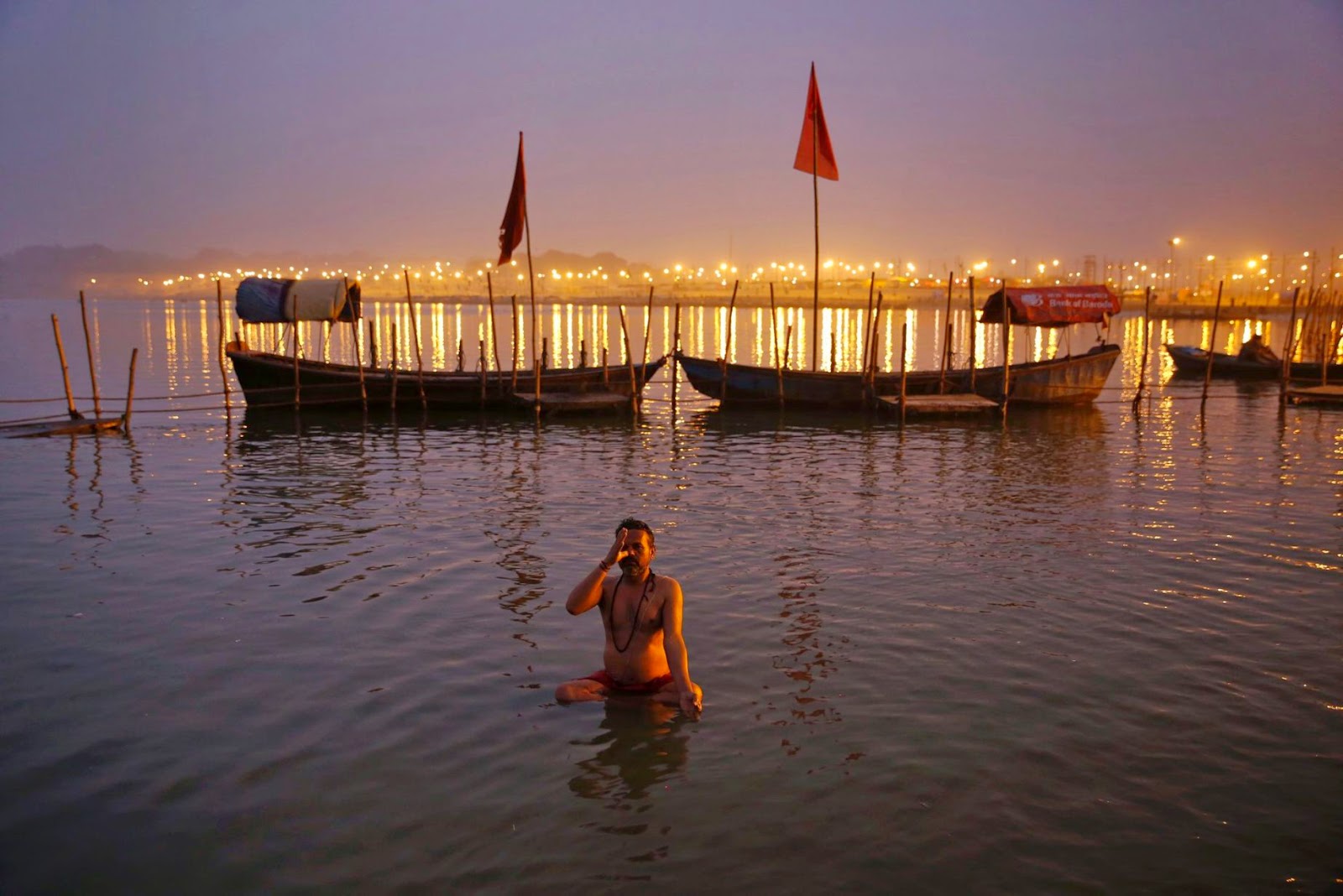Hundred thousand in the Hindu festival at northern India. Kumbh Mela is a mass Hindu pilgrimage of faith in which Hindus gather to bathe in a sacred river. It is considered to be the largest peaceful gathering in the world where around 100 million people are expected to visit during the festival. It is held every third year at one of the four places by rotation: Haridwar, Allahabad (Prayaga), Nashik and Ujjain. Thus the Kumbh Mela is held at each of these four places every twelfth year. The rivers at these four places are: the Ganges (Ganga) at Haridwar, the confluence (Sangam) of the Ganges and the Yamuna and the mythical Saraswati at Allahabad, the Godawari at Nashik, and the Shipra at Ujjain. The name Kumbh Mela comes from Hindi, and in the original Sanskrit and other Indian languages it is more often known as Kumbha Mela. Kumbha means a pitcher and Mela means fair in Sanskrit. The pilgrimage is held for about one and a half months at each of these four places where it is believed in Hinduism that drops of nectar fell from the kumbha carried by gods after the sea was churned. Bathing in these rivers is thought to cleanse one of all sins. The festival is billed as the "world’s largest congregation of religious pilgrims".
Cien mil en el festival hindú k
"Kumbhamela"
Cien mil en el festival hindú k
"Kumbhamela"
En el marco del hinduismo, la o el kumbhamela es un peregrinaje que se realiza cuatro veces cada doce años, y tiene lugar, por turno, en los siguientes lugares santos: Prayag, el nombre hindú de Allahabad (en UttarPradesh), Hardwar (en Uttaranchal), Ujjain (en Madhya Pradesh) y Nasik (en Maharashtra).Cada ciclo de doce años incluye un majā kumbhamela (o ‘gran reunión del pote’) en Praiag, en las riberas del Ganges, en la que participan varios millones de personas, lo que hace que probablemente sea el mayor peregrinaje que se celebra en el mundo. Las estimaciones consideran que en las tres semanas se reunen mas de 100 millones de personas. Literalmente, en sánscrito, el kumbhá: ‘jarro, pote, cántaro, vaso’; la mélā: ‘reunión, asamblea’). El acontecimiento más importante de la Kumbhamela es la inmersión en el río en el momento en que sus aguas se transforman en amrita (el néctar de la inmortalidad). Los hindúes creen que algunas gotas de amrita cayeron en cuatro lugares, motivo por el cual estas ciudades son sagradas y lugares de celebración del kumbhamela. Sumergirse completamente en el agua en este momento limpiará de todos sus pecados a ellos y a sus ascendentes en 88 generaciones.
קומבה מלה" - מאות אלפיים בפסטיבל ההינדי"
עולי רגל הינדים הגיעו בשבועיים האחרונים לעיר אללהבאד בצפון הודו, כדי להשתתף בפסטיבל הדתי "מאג' מלה". המאמינים נוהגים לטבול בנהר הגנגס הקדוש לאורך 45 ימי הפסטיבל. אחת ל-12 שנה, עולים לרגל למדינת אוטר פראדש, לעיר אללהאבאד, אלו החוגגים את פסטיבל קומבה מלה (Kumba Mela), הנודע כפסטיבל המושך את הקהל הגדול בעולם המורכב בעיקר מאנשים דתיים וסדואים (אנשים שפרשו מחיי החומר למען חיי סגפנות וחיפוש רוחני). מוקד המשיכה היא כמובן נקודת המפגש הקדושה בין שלושת הנהרות. זהו פסטיבל הקורא לאלפי הודים מכל קצוות תת היבשת לבוא ולטהר את נשמתם על גדות הגנגס.
IMAGES: IP
Travel / India / women travel / trip to India / women travel to India / women groups to India/ route / itinerary / sacred journey to India / sacred pilgrimage
Tags: Turismo femenino, mujeres viajeras, organización de viajes, viajes mujeres, viaje mujer India, viajes mujeres India, viajar sola, grupo mujeres, viajes organizados mujeres, encuentros de mujeres, viajes a medida India, viajes personalizados India.






.jpg)


No hay comentarios:
Publicar un comentario